
How to Landscape With Textured Leaves for Visual Interest
- 1. Understanding Textured Leaves in Landscaping
- 2. Incorporating Textured Leaves into Your Landscape Design
- 3. Choosing the Right Plants with Textured Leaves
- 4. Creating Layered Visual Interest with Textured Leaves
- 5. Practical Tips for Maintaining Textured Leaves in Your Garden
Landscaping with textured leaves can transform an ordinary garden into a visually dynamic space. Textured leaves not only add beauty and interest, but they also help create depth and contrast in your landscape design. Whether you’re aiming for a bold, tropical look or a more subtle, natural feel, incorporating a variety of leaves with different textures can take your garden to the next level. In this article, we will explore the benefits of textured leaves, how to use them effectively in your landscape, and the best plant choices to enhance your garden's visual appeal.
1. Understanding Textured Leaves in Landscaping
Textured leaves refer to plants whose foliage has a distinctive surface pattern, which can range from smooth and glossy to rough, corrugated, or even deeply veined. The texture of the leaves can have a dramatic effect on how a plant interacts with light, how it contrasts with other plants, and how it enhances the overall aesthetic of your garden.
The appeal of textured leaves lies in their ability to create focal points and provide tactile diversity. By combining different textures in a garden, you can create layers of visual interest that invite the eye to explore and appreciate the varied surfaces. In addition to visual appeal, textured leaves can also have practical functions, such as acting as ground cover, creating privacy screens, or providing a natural backdrop for flowering plants.
2. Incorporating Textured Leaves into Your Landscape Design
Incorporating textured leaves into your landscape design requires careful consideration of plant placement, color contrast, and overall design goals. Here are some effective ways to use textured leaves to enhance your garden:
2.1 Create Contrast with Bold Textures
If your garden primarily features smooth-leaved plants, adding textured leaves can introduce a sense of contrast. Plants with large, coarse leaves, such as hostas or gunneras, can create a bold contrast when paired with delicate, finely-textured plants like ferns or grasses. This contrast can highlight both plant types and add visual excitement to your space.
2.2 Use Textured Leaves to Frame Key Features
Textured foliage can be used to frame key elements in your landscape, such as pathways, seating areas, or water features. By strategically placing plants with bold leaves around focal points, you draw attention to these areas and create a more inviting atmosphere. For example, large-leaved plants like elephant ears can create dramatic frames around a garden bench or outdoor dining area.
2.3 Blend Textures for a Natural Look
If you’re aiming for a more natural, relaxed garden design, blending different textures can achieve a harmonious look. Pair plants with soft, velvety leaves like lamb’s ear with more rigid textures such as the spiky leaves of yucca or agave. The variation in textures will provide visual interest without feeling too busy or overwhelming.
3. Choosing the Right Plants with Textured Leaves
To make the most of textured leaves, it’s important to choose plants that complement each other in terms of size, shape, and color. Here are some of the best plants with textured leaves for different landscape styles:
3.1 Tropical Look
If you want to create a lush, tropical feel, consider plants with large, bold leaves. Options such as banana plants (Musa spp.) or the dramatic foliage of the bird of paradise (Strelitzia reginae) can add depth and texture to your garden. These plants often have wide, glossy leaves that create a sense of luxury and abundance.
3.2 Woodland or Shade Gardens
For shaded areas, textured plants like hostas, ferns, and caladiums can bring interest to a darker corner of your yard. Hostas, with their large, ribbed leaves, and ferns with their feathery texture, make a perfect combination in shade gardens. Their varying shades of green, combined with different leaf shapes, provide contrast and beauty in low-light conditions.
3.3 Drought-Tolerant Gardens
For more arid landscapes, plants like agave, yucca, and lavender have textured, spiky leaves that can thrive in dry conditions. These plants not only offer unique textures but are also low-maintenance, making them ideal for xeriscaping. Their bold forms contrast beautifully against the smooth textures of gravel or stone paths.
4. Creating Layered Visual Interest with Textured Leaves
Layering different textures in your garden can create a dynamic, engaging landscape. By placing plants with contrasting leaf textures at varying heights and distances, you can achieve a sense of depth and complexity. Here’s how to create a layered look:
4.1 Use Tall Plants with Coarse Textures in the Background
In the background of your garden, taller plants with large, coarse leaves can serve as a backdrop, providing a sense of depth. Consider plants like bamboo or tree ferns to create vertical height and texture. These can serve as a framework for smaller plants with more delicate textures in the foreground.
4.2 Place Fine-Leaved Plants in the Foreground
In the foreground, place plants with fine, intricate leaves such as lavender or ornamental grasses. These plants can soften the boldness of the background plants and allow the larger-leaved plants to stand out while maintaining a sense of balance in the design.
5. Practical Tips for Maintaining Textured Leaves in Your Garden
Maintaining plants with textured leaves is generally straightforward, but certain care practices can help ensure they thrive in your landscape:
5.1 Regular Watering
Many plants with textured leaves require consistent watering, especially during hot or dry periods. Be mindful of the specific needs of your plants and water them deeply to encourage healthy root systems.
5.2 Pruning and Deadheading
Prune or deadhead plants with textured leaves to maintain their shape and remove any damaged or dying foliage. This will help keep your garden looking neat and ensure the plants' growth is focused on producing healthy, vibrant leaves.
5.3 Fertilization
Textured-leaf plants may benefit from periodic fertilization, especially those with large or heavy leaves. Use a balanced fertilizer to encourage strong leaf development and ensure the plants have the nutrients they need to thrive.
By carefully selecting and arranging plants with textured leaves, you can create a visually striking landscape that captures attention and provides a sense of depth and intrigue. If you're looking for more landscaping ideas or plants to enhance your garden, visit Beautiful Landscapes for a variety of options and expert advice.



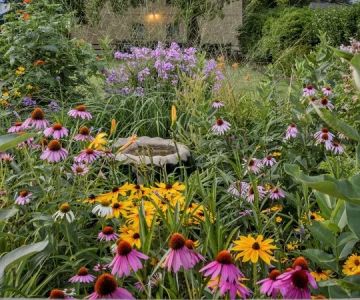
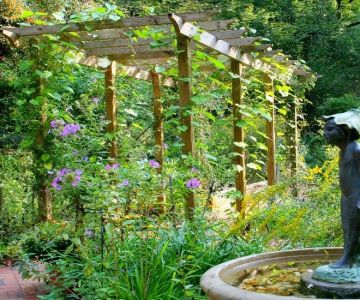
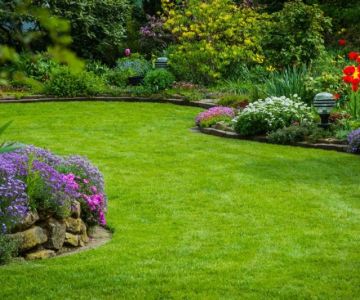


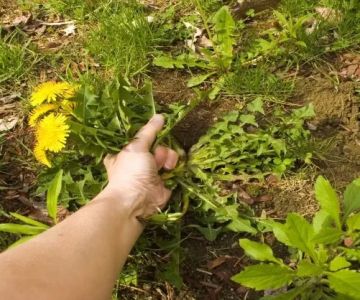
 Hollandia Outdoors4.0 (251 reviews)
Hollandia Outdoors4.0 (251 reviews) Slinkard Property Services5.0 (1 reviews)
Slinkard Property Services5.0 (1 reviews) Green Thumb / Green Finger Enterprises LLC4.0 (42 reviews)
Green Thumb / Green Finger Enterprises LLC4.0 (42 reviews) Great Oaks Landscaping4.0 (22 reviews)
Great Oaks Landscaping4.0 (22 reviews)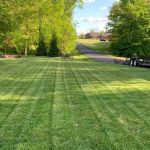 Jake's Lawn Care3.0 (16 reviews)
Jake's Lawn Care3.0 (16 reviews) Great Lakes Landscape Supply: South Yard5.0 (3 reviews)
Great Lakes Landscape Supply: South Yard5.0 (3 reviews) Tips for Maintaining a Lawn in a Hot, Dry Summer
Tips for Maintaining a Lawn in a Hot, Dry Summer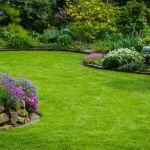 How to Use Layers of Planting to Create Depth and Balance in Your Garden
How to Use Layers of Planting to Create Depth and Balance in Your Garden Best Drought-Tolerant Plants for Your Region
Best Drought-Tolerant Plants for Your Region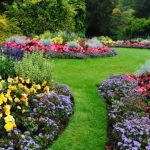 How to Choose Plants That Don’t Compete: A Guide for Perfect Landscaping
How to Choose Plants That Don’t Compete: A Guide for Perfect Landscaping How to Build a Sustainable Backyard Using Native Materials: A Step-by-Step Guide
How to Build a Sustainable Backyard Using Native Materials: A Step-by-Step Guide How to Use Vertical Gardening to Max Out Small Yards
How to Use Vertical Gardening to Max Out Small Yards